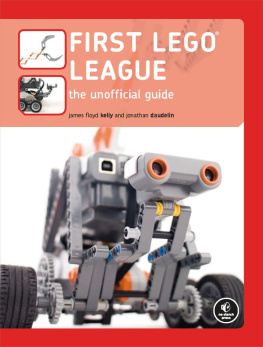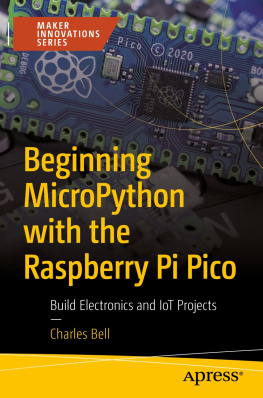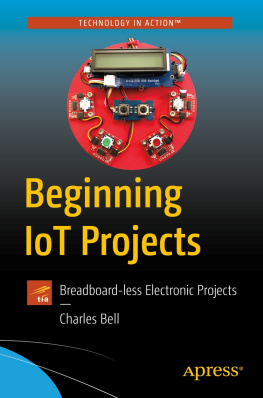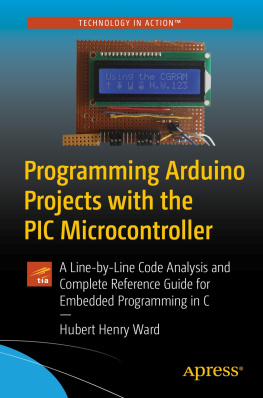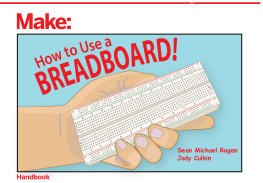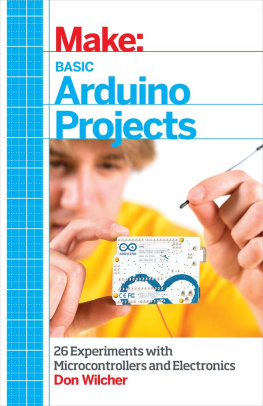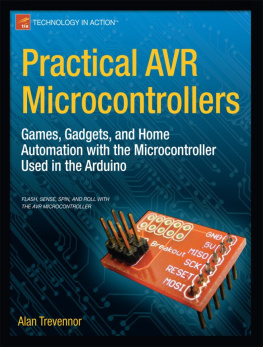Supplemental files and examples for this book can be found at http://examples.oreilly.com/0636920020882/. Please use a standard desktop web browser to access these files, as they may not be accessible from all ereader devices.
All code files or examples referenced in the book will be available online. For physical books that ship with an accompanying disc, whenever possible, weve posted all CD/DVD content. Note that while we provide as much of the media content as we are able via free download, we are sometimes limited by licensing restrictions. Please direct any questions or concerns to .
Preface
The MintDuino is deceivingthis little tin of electronics is capable of providing the brains for an unlimited number of devices limited only by your imaginationand, of course, your bank account.
While the MintDuino is certainly capable of being used during a moment of inspiration, youll find that the real power of the device comes when you sit down, figure out what you want to make, and then start tackling your project a bit at a time. Anyone who has done circuit building or programming (or both) knows that it rarely pays to just start inserting components and writing complex sketches (programs in Arduino-speak). When trouble arises in a circuit or a program, it can be a time-consuming process to track down the error (or more likely, errors ) when you have too much complexity. Thats why its always a good idea to break a project idea down into manageable componentslets call them subtasks. If your big project has five major subtasks, tackling the first subtask and building a slightly less complicated circuit with a slightly less complicated sketch will save time and reduce stress. Once youve got the first subtask figured out, you move on to the second. By the time youve got all five subtasks built and their individual sketches tested, youre likely to have an increased chance of success when you pull them all together and build The Big Project.
And thats exactly what youre going to do in this MintDuino Notebook. Youre going to be shown The Big Projectbut youre not going to be allowed to build it just yet. The Big project has subtasks, and first youre going to learn how to get the subtasks to work. Once youve done that, youll be ready for the finale where you bring together all youve learned and tackleThe Big Project. So, what is The Big Project? Keep reading.
What You Need
The complete list of materials for this project is below, but youll find a partial list of components with each subtask that contains only those items used in that particular section:
1 MintDuinoassembled (see http://makeprojects.com/Project/Build-a-Mintronics-MintDuino/608/1 for assembly instructions)
1 9V battery
1 FTDI adapter, such as the FTDI Friend (see http://www.makershed.com/ProductDetails.asp?ProductCode=MKAD22)
1 USB cable (A to mini-B type)
A jumper wire kit, such as http://www.makershed.com/ProductDetails.asp?ProductCode=MKSEEED3
2 LEDs (you can use any color you have handy)
Plus, youll need the following components, all of which are available in the Mintronics: Survival Pack:
2 LEDs (one red and one green LED come with the Survival Pack, but you can use any color you have handy)
1 mini breadboard
1 9V battery connector
3 resistors (100 ohm minimum)
Jumper wires (youll find enough wire in the Survival Pack to get you started, but youll need to dip into the jumper wire kit soon)
2 pushbuttons
Enough jumper wire to get you through Subtask 3.
Conventions Used in This Book
The following typographical conventions are used in this book:
Italic
Indicates new terms, URLs, email addresses, filenames, and file extensions.
Constant widthUsed for program listings, as well as within paragraphs to refer to program elements such as variable or function names, databases, data types, environment variables, statements, and keywords.
Constant width boldShows commands or other text that should be typed literally by the user.
Constant width italicShows text that should be replaced with user-supplied values or by values determined by context.
Tip
This icon signifies a tip, suggestion, or general note.
Caution
This icon indicates a warning or caution.
Using Code Examples
This book is here to help you get your job done. In general, you may use the code in this book in your programs and documentation. You do not need to contact us for permission unless youre reproducing a significant portion of the code. For example, writing a program that uses several chunks of code from this book does not require permission. Selling or distributing a CD-ROM of examples from OReilly books does require permission. Answering a question by citing this book and quoting example code does not require permission. Incorporating a significant amount of example code from this book into your products documentation does require permission.
We appreciate, but do not require, attribution. An attribution usually includes the title, author, publisher, and ISBN. For example: MintDuino by James Floyd Kelly (OReilly). Copyright 2011 Blue Rocket Writing Services, Inc., 978-1-4493-0766-0.
If you feel your use of code examples falls outside fair use or the permission given above, feel free to contact us at .
Safari Books Online
Note
Safari Books Online is an on-demand digital library that lets you easily search over 7,500 technology and creative reference books and videos to find the answers you need quickly.
With a subscription, you can read any page and watch any video from our library online. Read books on your cell phone and mobile devices. Access new titles before they are available for print, and get exclusive access to manuscripts in development and post feedback for the authors. Copy and paste code samples, organize your favorites, download chapters, bookmark key sections, create notes, print out pages, and benefit from tons of other time-saving features.
OReilly Media has uploaded this book to the Safari Books Online service. To have full digital access to this book and others on similar topics from OReilly and other publishers, sign up for free at http://my.safaribooksonline.com.
How to Contact Us
Please address comments and questions concerning this book to the publisher:
| OReilly Media, Inc. |
| 1005 Gravenstein Highway North |
| Sebastopol, CA 95472 |
| 800-998-9938 (in the United States or Canada) |
| 707-829-0515 (international or local) |
| 707-829-0104 (fax) |
We have a web page for this book, where we list errata, examples, and any additional information. You can access this page at:
| http://www.oreilly.com/catalog/0636920020882 |
To comment or ask technical questions about this book, send email to:
For more information about our books, courses, conferences, and news, see our website at http://www.oreilly.com.


